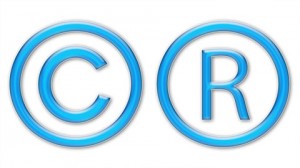Investments can be held in a number of different structures, e.g. individual, partnership, company,...
Protecting Your Most Important Assets – Intellectual Property Rights
 When you think about protecting company assets, several things probably come straight to mind, such as land, buildings, machinery, inventory and vehicles. In many instances companies overlook their intellectual property, which can be one of their most valuable assets. By understanding the different types of intellectual property and how they can be protected against infringement you can help your business stay ahead of the competition.
When you think about protecting company assets, several things probably come straight to mind, such as land, buildings, machinery, inventory and vehicles. In many instances companies overlook their intellectual property, which can be one of their most valuable assets. By understanding the different types of intellectual property and how they can be protected against infringement you can help your business stay ahead of the competition.
Your "intellectual property" can include:
- patents
- trade marks
- designs
- copyright
- trade secrets
A patent is an exclusive right for commercial exploitation granted by a government body to the owner/inventor for a device, process, method or substance that is new, innovative and useful. The length of time for which the patent is granted varies between countries, but typically lasts for 20 years. If you are thinking about patenting an invention, it’s important to not make knowledge of it public before your patent is granted. Discussion with employees, consultants and business associates about the patent should be conducted confidentially, with confidentiality agreements signed in advance. The main shortcoming of patent protection is the complex and costly process of preparing and filing one. Professional assistance from a patent attorney is recommended.
Trademarks cover a range of elements (letters, numbers, words, phrases, smells, shapes, logos, pictures, aspects of packaging, or combinations of these) that distinguish your goods and services. They can be a vital part of your marketing and require protection. Trademarks need to be unique or closely associated with your business. For example, Coca Cola is trademarked as an original name. Windows is a trademark of Microsoft, as it is the name of its computer operating systems, while anyone can use the word "windows" to describe the glass used in buildings. By registering your trademark, you gain the exclusive right to use, license, or even sell it, for the goods and services it has been registered for. Before registering for a trademark, it’s advisable to conduct a trademark search (which can be done online in many countries) to see if it has been registered by another company. You can be subject to legal action if someone else has already registered the mark you propose to use.
Designs are the features of shape, configuration, pattern or ornamentation, which gives a product a unique appearance. For example, if you were marketing a new soft drink and came up with a unique bottle design to differentiate your product, you could register the design to protect your right to use it exclusively. Design registration is meant to protect designs that have a commercial or industrial use so works of art are not eligible for design registration but can be protected under copyright. Designs are registered by submitting photos and/or illustrations of the design along with the required form to the government department that administers intellectual property. If your design is assessed as being new and it satisfies legal requirements, the registration will be accepted.
Copyright protects the way original ideas are expressed, not the ideas themselves. It is free and automatically covers original works of art and literature, music, films, sound recordings, broadcasts and computer programs. Although copyright is an automatic right under international conventions, it can be registered in some countries for additional protection and legal evidence of claim to rights of use.
Trade secrets include such things as formulas (think Coca Cola!), processes, designs, instruments, patterns, or compilations of information that are not generally known or reasonably ascertainable and therefore are kept secret to give the owning business an advantage over their competitors. In comparison to a patent, it can be the right strategy when it’s difficult to "reverse engineer" the product to copy the construction, manufacturing process or formulation. Trade secrets can be protected by requiring employees and contractors to sign a confidentiality (non-disclosure) agreement before being given access to the information.
Protecting the intellectual property of your business can be just as important as protecting other types of asset.


